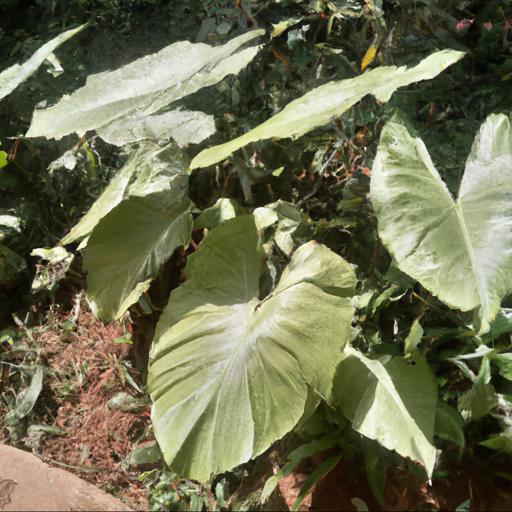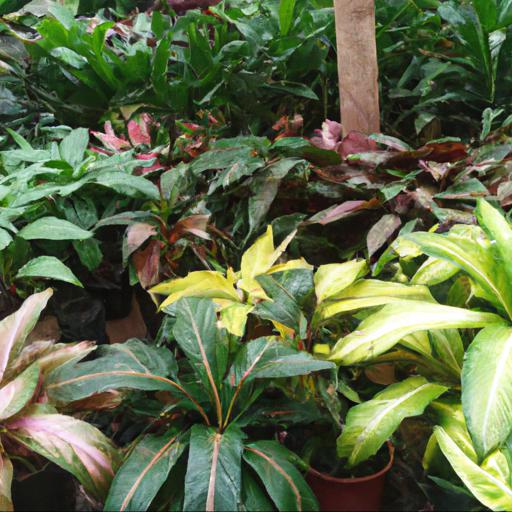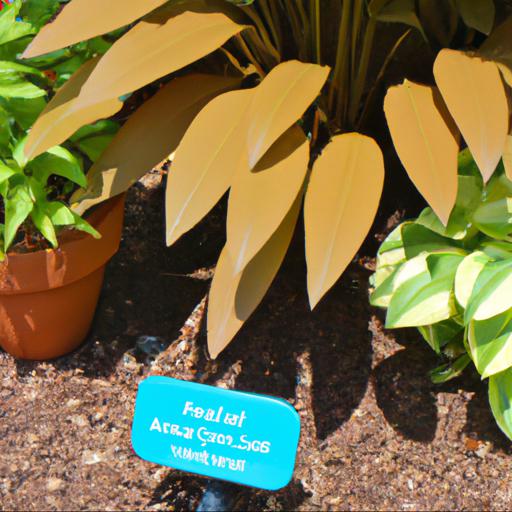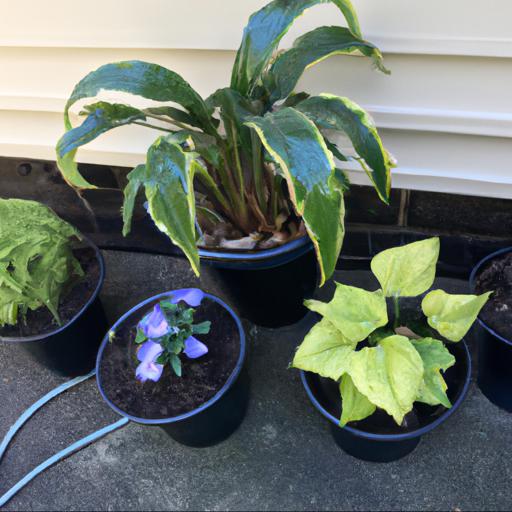Are you looking for plants to fill your shady garden? Shade can be a challenge for gardeners, but it doesn’t have to be.
There are plenty of plants that thrive in full shade and can bring life to a shady spot. Here are six plants for full shade that will bring beauty and color to your garden. From Hostas to Astilbes, these plants will thrive in low light and provide a stunning display of foliage and flowers.
With the right care, these plants will bring life to your shady garden.
Benefits of planting in full shade

Gardening in full shade can be a challenge, but if done right can be incredibly rewarding. There are a variety of plants that can flourish in these conditions, providing year-round colour and texture to your otherwise dark corners. If you’re looking to experiment with full shade gardening, here are six plants that are sure to make a statement.
The first is the foxglove (Digitalis purpurea). It’s a hardy biennial that has long spires of showy flowers in shades of pink, purple and white.
The lush foliage is a great contrast to the bright blooms, creating an elegant and stunning display. The foxglove is a great choice for shady spots as it does best in well-drained, semi-shady soil. For something a little more low-maintenance, try ajuga (Ajuga reptans).
Also known as bugleweed, this versatile groundcover is perfect for adding texture and colour to shady spots. The evergreen foliage is lusciously dark green and produces pretty blue or white flowers in the springtime.
It spreads quickly and is low maintenance—perfect for the gardener on the go!Another wonderful full shade plant is the hosta (Hosta spp. ).
These striking perennial shade plants come in a variety of colours and textures. Some varieties can even be grown with foliage that changes shape and colour depending on the season.
The large lustrous leaves are sure to draw attention and make a bold statement in any garden. Holly fern (Polystichum acrostichoides) is a great choice for an evergreen groundcover. It has soft, glossy foliage and lush fronds that provide a dramatic contrast to other shade loving plants. It does best in sheltered, semi-shady spots and can handle some light foot traffic, making it a great choice for adding a touch of greenery to walkways or patio areas. Lamium (Lamium maculatum) is a perennially popular choice for shady spots. There is a range of varieties to choose from, each with its own unique foliage and bloom colour. It works great as a ground cover and provides an easy way to add touches of pink, purple, white and even yellow blooms to your shady spot. Finally, if you’re looking to add some delicate blossoms to your shade garden, try the lady slipper orchid (Cypripedium calceolus). This graceful flower is a rare find, but will reward you with its stunning pink and white blooms in the summer. It requires some special care, but when looked after correctly will bloom again year after year. Planting in full shade is a great way to bring an infusion of colour and texture to your garden. With the right selection of plants, and a bit of patience, you’ll be amazed at the transformation you can achieve. Here we’ve highlighted just a few of the many plants perfect for full shade – so be sure to do your research and find the best ones for your garden.
Types of plants suitable for full shade

As a UK Garden expert, finding the perfect plants for full shade can be challenging. Different types of plant thrive in different conditions and unfortunately, many of the most common garden plants are unable to survive in a full shade environment.
Fortunately, there are still a number of gorgeous plants that can thrive in the shade and make your garden look as vibrant and colorful as ever. Here are six plants that are perfect for full shade. The first might be hellebores, commonly known as ‘Lenten Roses’.
These beautiful flowers come in a range of colors and can thrive in almost any climate, making them perfect for full shade. They typically bloom in the late winter, have attractive foliage and don’t require much maintenance. The second is Fatsia Japonica, also known as Japanese Aralia.
While it’s origins are in tropical climates, it can be perfectly happy in full shade. It’s an evergreen shrub, so it’ll keep your garden looking lively all year round.
It can grow up to 10 ft tall and has large palmate leaves, making it both beautiful and easy to maintain. Next up is Hostas, the most popular of all shade tolerant plants.
These come in a variety of colors and sizes, so there’s sure to be one to fit your garden. They also require very little maintenance and can thrive in almost any climate. Ferns are also a great option for full shade gardens.
The Asparagus fern is one of the most popular, as it’s relatively low maintenance and has wispy thready leaves that give it an instant touch of elegance. The fifth is Ligularia, also known as the Daisy plant. These come in shades of yellow, orange and red, and they’re incredibly easy to maintain. These flowers will bloom in the summer months, making them the perfect way to add a bit of color to your full shade garden. Finally, the Heuchera (also known as Coral Bells) is a great option. These plants come in a variety of colors, from violet to white, and they look stunning when they’re in full bloom. They’re also fairly low maintenance, so you won’t have to worry about constantly caring for them. These six plants are perfect for full shade gardens, and will make your garden look vibrant and colorful all year round. So if you’re looking for something to add to your garden that will thrive in the shade, these are great options!
Tips for planting in full shade

When it comes to gardening, planting in full shade can be a tricky endeavor. Many gardeners struggle to find plants that will thrive in low light conditions, but thankfully there are some great options out there.
Knowing which plants to choose and how to prepare the soil can make a big difference when it comes to getting the most out of those shady areas. Here are some tips for getting the most out of your full shade garden. First, it’s important to know which plants will thrive in shady conditions.
Some of the best options are perennial flowers like hostas, shade-tolerant shrubs like rhododendrons, and evergreen trees like boxwood. All of these plants can handle more shade than sun, without sacrificing beauty or growth rate.
Second, it’s important to prepare the soil for your full shade plants. Since shade restricts the amount of sun that can reach the root system of the plants, the soil needs to be well-draining and full of nutrients. Adding a thick layer of mulch, compost, and manure can help to improve soil quality and make sure that your plants get all the nutrition they need.
Furthermore, watering regularly will help to ensure that the soil is moist and absorbent. Finally, it’s important to remember that shade gardens don’t need to be drab and boring.
There are plenty of plants that will bring lots of color to the shade. For example, begonias, African violets, and coleus can all add lots of vibrancy to a shady area. For a more tropical feel, consider adding ferns and elephant ears.
By following these tips, full shade gardens can be just as beautiful as those in direct sunlight. With the right plants and soil preparation, you can create a stunning garden that is drought and insect resistant!
Care and maintenance of six plants for full shade
When it comes to choosing plants for a full shade location, one must think beyond the traditional shade plants like ferns and impatiens. That’s because there are six other wonderful plants that can add beauty and interest to a full shade garden.
With the proper care and maintenance, these six plants can create an attractive, low-maintenance landscape in any full-shade garden. Hostas are a great choice for shady spots, with their lush clumps of big, beautifully veined foliage in a variety of colors. Hostas are very easy to take care of and require minimal maintenance except for occasional division.
They’re a great choice for both container and bedding plants, as they form a great backdrop to other plants, and provide interesting texture and color. Lamium is another plant which thrives in full shade and offers an interesting texture as well.
It grows in neat mounds and can be used as a groundcover. The leaves come in a variety of colors and shapes and have white or pink flowers in the late spring and summer. Lamium is a low-maintenance plant which requires only minimal pruning in the late fall or early spring.
Meadow rue is another small shrub or perennial which enjoys full shade and requires very little care. It has ferny foliage and sprays of delicate, white flowers in the spring. The lovely, airy foliage of this small, shade-loving shrub adds texture and depth to a landscape, and makes a wonderful backdrop for other plants.
Japanese painted ferns are great for full shade locations as they have a lovely form and texture, and offer great color. The fronds are tipped in silvery-blue and give off a great look.
These plants prefer acidic soil and will form a beautiful, cascading mound of vibrant leaves. Foamflower is a wonderful, hardy groundcover that does well in full shade. It’s noted for its attractive foliage with small, saw-toothed leaves, and its beautiful, white flowers. It’s easy to maintain and requires only a bit of soil preparation before planting. Finally, Corydalis plants provide unique foliage in a full shade garden with their deeply lobed, blue-green foliage and delicate, wispy leaves. They’re delicate but hardy, and require only minimal care. These six plants for full shade offer an interesting variety of textures, foliage colors and interesting shapes to brighten up any full shade garden. If properly planted, nourished and well-maintained, they can provide a vibrant, low-maintenance landscape that is sure to delight all year round.
Our video recommendation
Bottom Line
This article provides a list of six plants that are perfect for areas with full shade. These plants include Hosta, Heuchera, Brunnera, Epimedium, Tiarella and Astilbe.
All of these plants are easy to care for and will thrive in shady areas. They are also low maintenance, making them ideal for any garden. With the right care, these plants will add beauty and color to any shady area.
FAQ
What are the best plants for full shade?
Some of the best plants for full shade include hosta, ferns, impatiens, begonias, and English ivy.
What are the benefits of planting in full shade?
The benefits of planting in full shade include reduced water requirements, protection from extreme temperatures, and reduced weed growth. Additionally, plants in full shade are less likely to suffer from sunburn or other sun-related damage.
What are some common plants that thrive in full shade?
Some common plants that thrive in full shade include hostas, ferns, impatiens, begonias, and English ivy.
What are the challenges of gardening in full shade?
The main challenge of gardening in full shade is that plants need sunlight to photosynthesize and grow. Without adequate sunlight, plants may struggle to survive and may not produce flowers or fruit. Additionally, soil in shady areas is often more acidic, which can make it difficult for plants to absorb nutrients. Finally, shade can also create an environment that is more hospitable to pests and diseases.
What are some tips for successful gardening in full shade?
1. Choose shade-tolerant plants that thrive in low light conditions. 2. Amend the soil with organic matter to help retain moisture. 3. Mulch the soil to help retain moisture and block weeds. 4. Water regularly and deeply to promote healthy root growth. 5. Use a shade cloth to reduce the intensity of the sun. 6. Fertilize the soil to provide essential nutrients. 7. Prune plants regularly to encourage new growth. 8. Plant companion plants to provide additional shade. 9. Use containers to create a more controlled environment. 10. Plant in the early morning or late evening to reduce water loss.
What are some of the most popular plants for full shade?
Some of the most popular plants for full shade include Hosta, Astilbe, Ferns, Heuchera, Impatiens, and Caladium.

